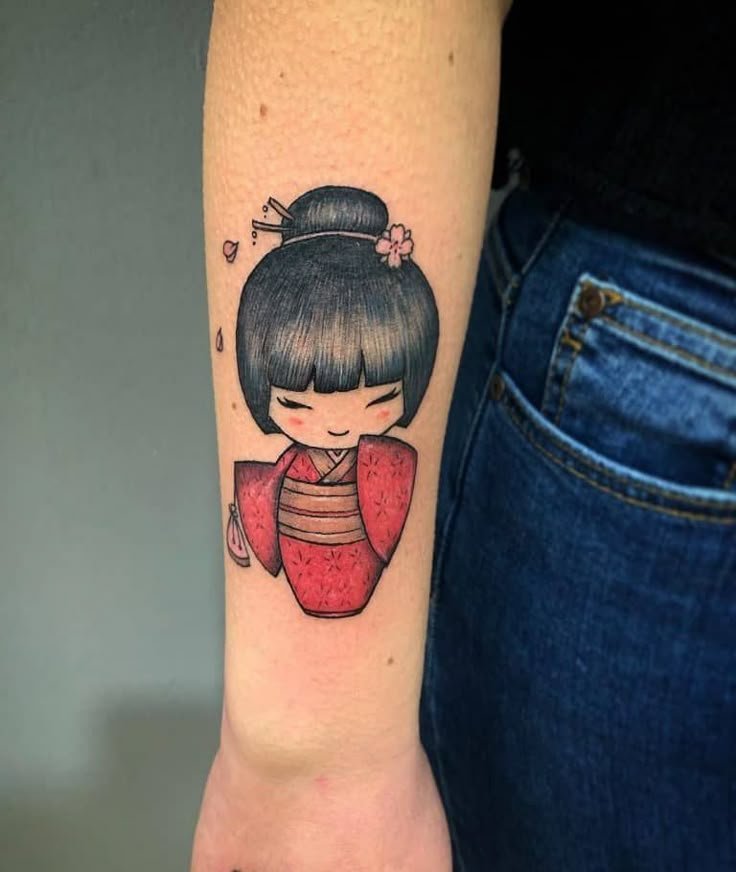

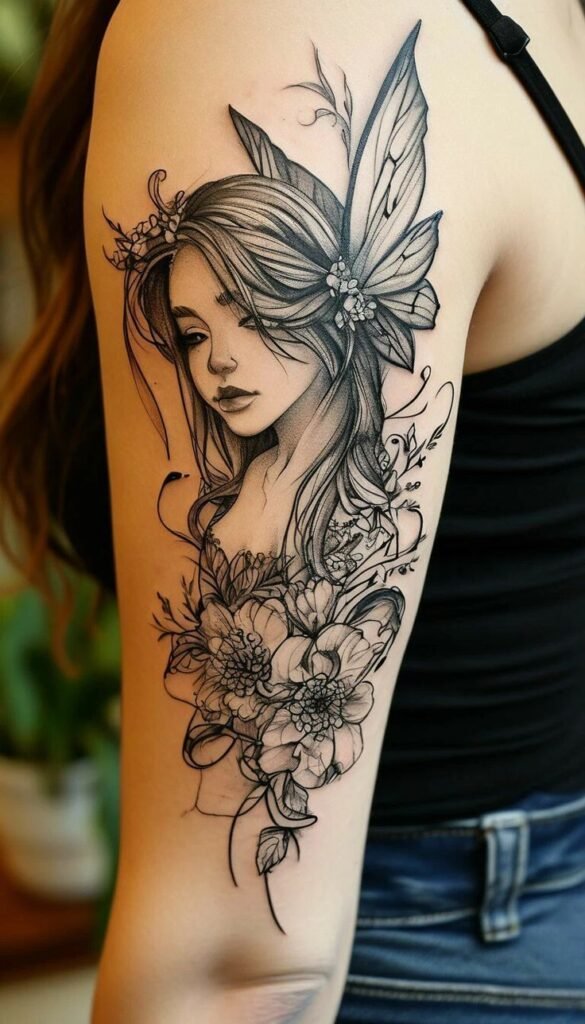
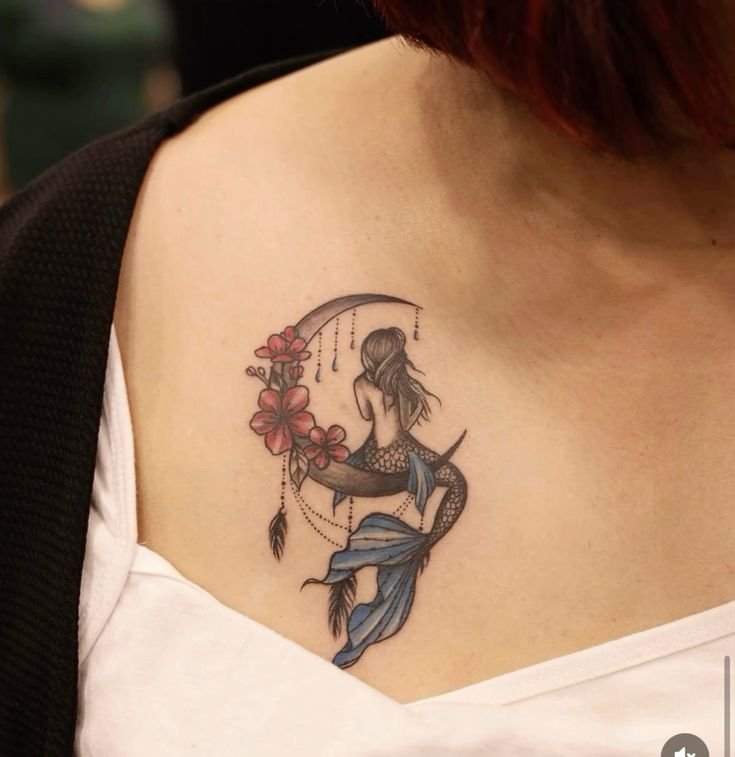
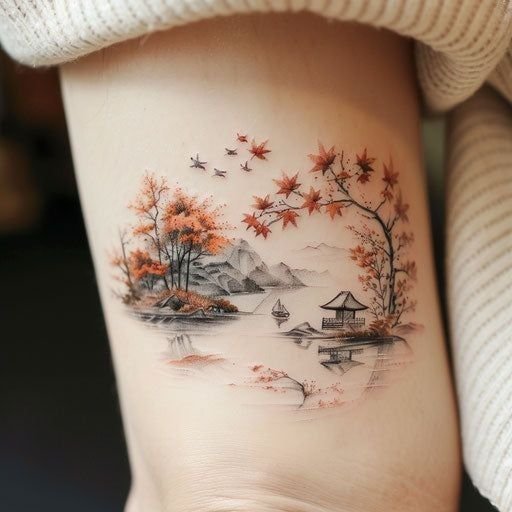
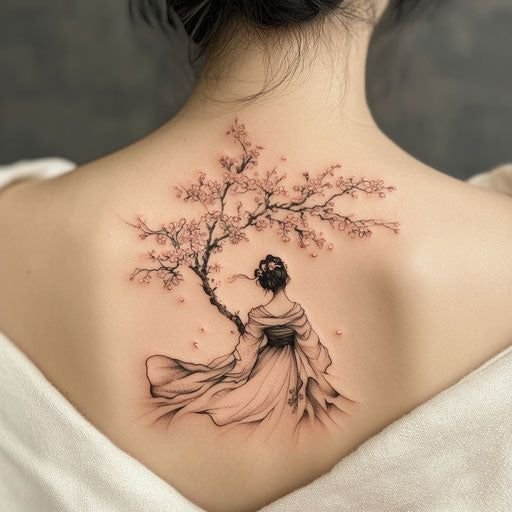
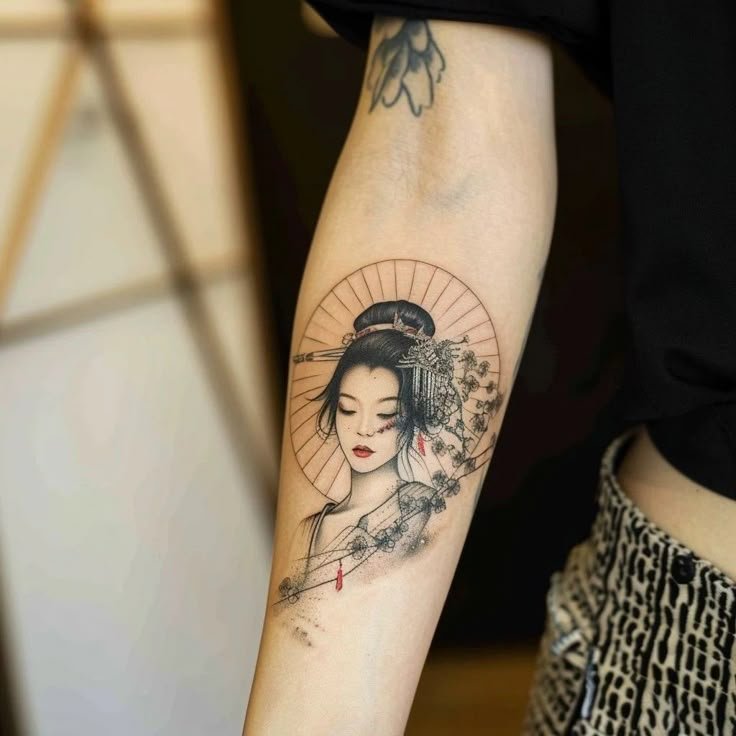
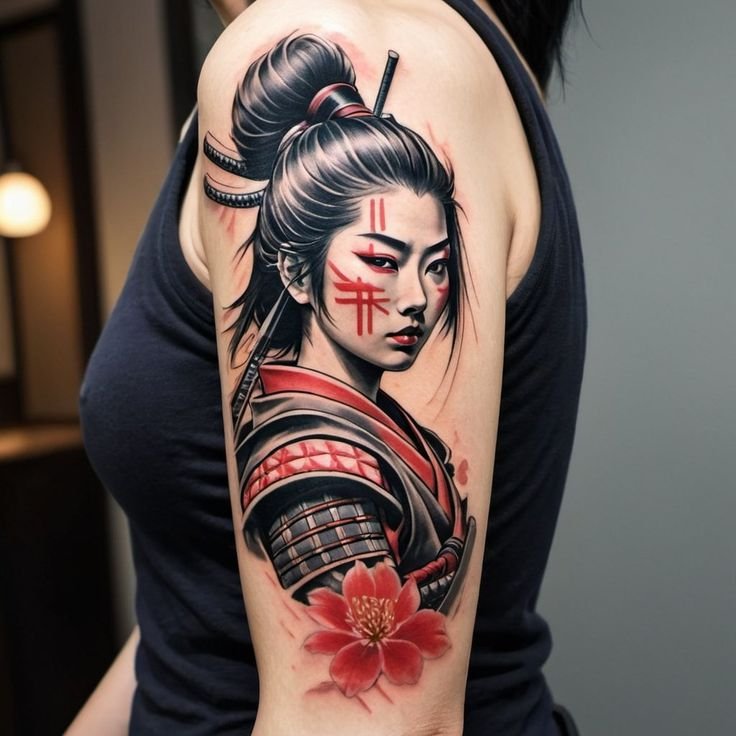
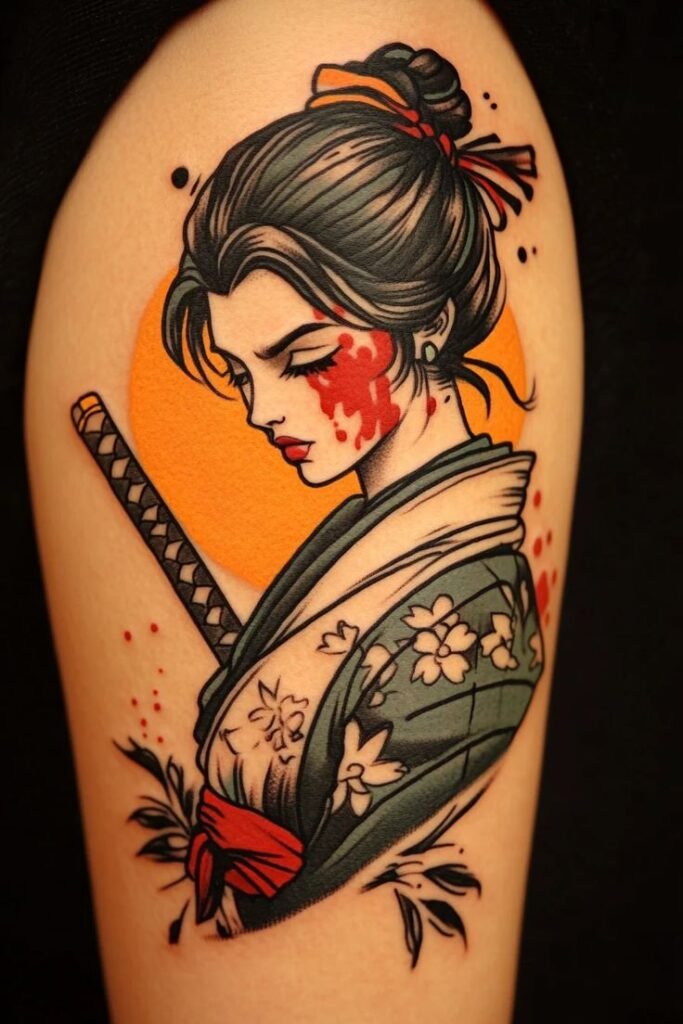
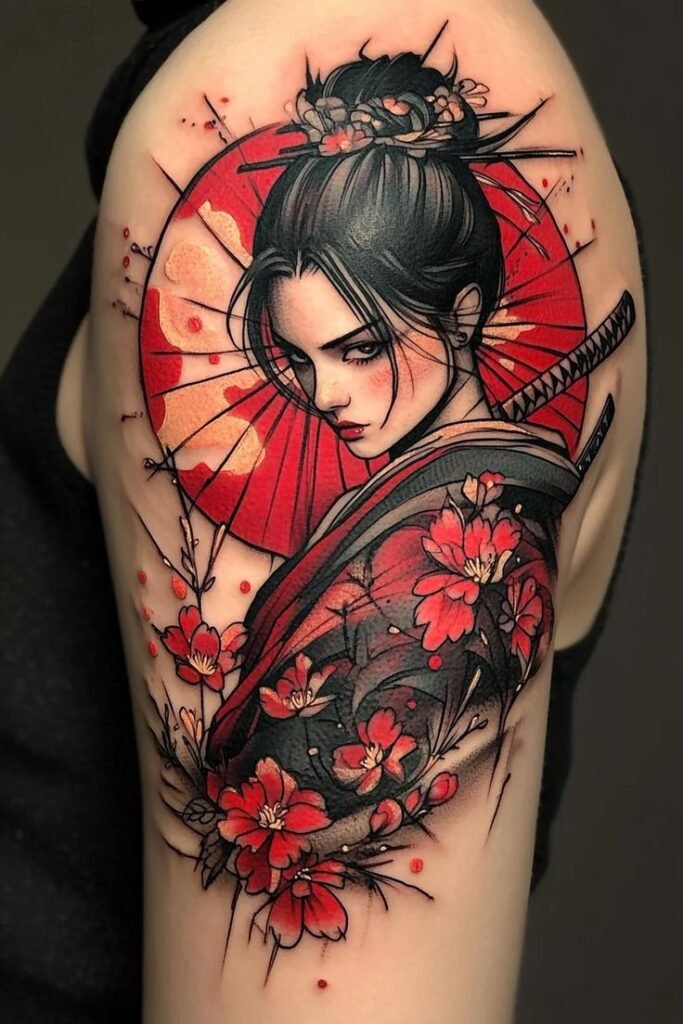
All image credit: Pinterest
Japanese Style Tattoo.: Japanese-style tattoos, also known as Irezumi, are more than just body art. They are steeped in centuries of tradition, spirituality, folklore, and social history. These intricate, bold, and vividly colorful tattoos are recognizable across the world and have become a significant influence in the global tattoo industry.
In this article, we’ll explore the origins, symbolism, techniques, cultural significance, and modern evolution of Japanese tattoos. Whether you’re a tattoo enthusiast or a curious observer, this deep dive into the world of Irezumi will show you why this art form holds a unique place in both history and the hearts of many.
A Brief History of Japanese Tattoos
The roots of Japanese tattoos can be traced back to Jomon period (10,000 BCE – 300 BCE), where cord-marked patterns were found on figurines, believed to represent early tattooing. However, the use of tattoos in Japan has fluctuated between spiritual reverence and criminal punishment over centuries.
Tattoos in Ancient Japan
- Early on, tattoos were worn by the Ainu people (indigenous people of Japan) as part of their religious and social beliefs.
- In the Yayoi period (300 BCE – 300 CE), tattoos were reportedly used for tribal identification and to ward off evil spirits.
Punitive Tattoos
During the Edo period (1603–1868), the government started using tattoos as a form of punishment. Criminals would receive tattoos on their arms, foreheads, or shoulders indicating their crimes. This association contributed to the social stigma that tattoos carry even today in Japanese society.
The Rise of Decorative Irezumi
Despite this stigma, the Edo period also witnessed the flourishing of decorative tattooing. This was heavily influenced by woodblock prints (ukiyo-e) and the legendary Chinese novel Suikoden, which featured heroic warriors with elaborate full-body tattoos. Commoners, especially firemen, laborers, and gamblers, began getting tattooed as a mark of rebellion, bravery, and masculinity.
The Style and Technique of Irezumi
Japanese tattoos are known for their large-scale, full-body designs. These often cover the back, arms, thighs, and even extend to the chest. Key elements of the style include:
1. Bold Outlines and Rich Color Palettes
Irezumi uses black ink for strong outlines and vibrant colors like red, green, yellow, and blue for shading and details. These create a sense of depth and drama.
2. Traditional Themes
Designs are typically based on:
- Mythology
- Folktales
- Nature (koi fish, waves, cherry blossoms)
- Religious symbolism (Buddhist deities, Shinto gods)
3. Composition
There’s a strong emphasis on balance and flow, especially considering how the tattoo fits the body’s shape. Many designs use background elements such as wind bars, water waves, and clouds to bring cohesion to the entire piece.
Symbolism in Japanese Tattoos
Each element in a Japanese tattoo carries deep symbolic meaning. Here are some of the most iconic motifs:
1. Koi Fish (Carp)
Symbolizes perseverance, ambition, and transformation. In Japanese legend, a koi that swims upstream and reaches the Dragon Gate becomes a dragon.
2. Dragons
Unlike Western dragons, Japanese dragons are benevolent and wise, representing power, protection, and wisdom.
3. Tigers
Symbol of strength, courage, and protection against evil spirits.
4. Cherry Blossoms (Sakura)
Short-lived and beautiful, they represent the fleeting nature of life, a central idea in Japanese aesthetics.
5. Peonies (Botan)
Known as the “king of flowers” in Japan, symbolizing prosperity, bravery, and honor.
6. Hannya Mask
A demonic-looking female mask, representing jealousy, anger, and vengeance — but also transformation and emotional complexity.
7. Samurai and Geisha
Samurai symbolize honor and discipline, while geisha reflect grace, beauty, and cultural refinement.
8. Foo Dogs (Komainu)
Guardian lion-dogs, often placed in pairs, symbolize protection and are believed to ward off evil spirits.
Tools and Methods
Traditional Method: Tebori
Tebori is a hand-poking technique using wooden handles and steel needles attached by silk thread. The process is slow, painful, and time-consuming but results in rich color saturation and a unique texture.
Modern Machines
Today, many Japanese tattoo artists also use electric machines, which are faster and less painful. However, the traditional tebori technique is still respected and practiced by purists.
Cultural Perception and Taboo
Despite its artistic and historical significance, tattoos in Japan are still often viewed negatively. This is primarily because of their association with the Yakuza, Japan’s organized crime syndicates, who are known for their full-body Irezumi.
In Modern Society:
- Many onsen (hot springs), gyms, and pools still prohibit tattooed individuals.
- Tattooing was technically illegal in Japan until 2020 for non-medical professionals. It was only after a landmark court case that tattooing was recognized as an art, not a medical practice.
- Public opinion is slowly changing, especially among younger generations and due to global influence.
Western Influence and Global Popularity
Japanese tattooing has had a massive impact on the global tattoo community, particularly in the West. Many international tattoo artists specialize in Japanese motifs, and Western collectors travel to Japan specifically for authentic Irezumi.
Notable Japanese Tattoo Masters:
- Horiyoshi III – A living legend known for full-body traditional designs and the tebori technique.
- Shige (Shigenori Iwasaki) – Blends traditional Japanese motifs with modern aesthetics and machine tattooing.
Choosing a Japanese Tattoo: What to Consider
If you’re considering getting a Japanese-style tattoo, here are some tips:
1. Research the Meaning
Every element has cultural and symbolic weight. Understand what your chosen design stands for.
2. Find a Specialist
Japanese-style tattooing requires years of training and skill. Look for an artist with a strong portfolio in this genre.
3. Respect the Culture
Don’t mix elements randomly or treat the tattoo as just “decoration.” Cultural appreciation is important, especially for symbols rooted in spirituality.
4. Be Ready for the Commitment
Japanese tattoos are usually large, multi-session pieces. They require time, pain tolerance, and financial investment.
Preservation and Evolution
While some aspects of Irezumi remain traditional, the art form is evolving:
- Modern artists experiment with color gradients, geometric styles, and abstract elements.
- Collaborations with manga, anime, and street art have brought fresh perspectives.
- Tattoo expos and festivals in Japan are helping the art gain acceptance and appreciation.
Conclusion
Japanese-style tattoos are not just skin-deep. They are a canvas of history, beliefs, honor, nature, and human emotion. The beauty of Irezumi lies not just in its visual impact but in the story it tells and the spirit it reflects.
While Japan itself continues to grapple with the duality of this ancient art — both revered and rejected — the world is increasingly embracing it as a masterpiece of cultural expression.
Whether you admire it from afar or wear it on your skin, a Japanese tattoo is a journey — through mythology, craftsmanship, and identity.






